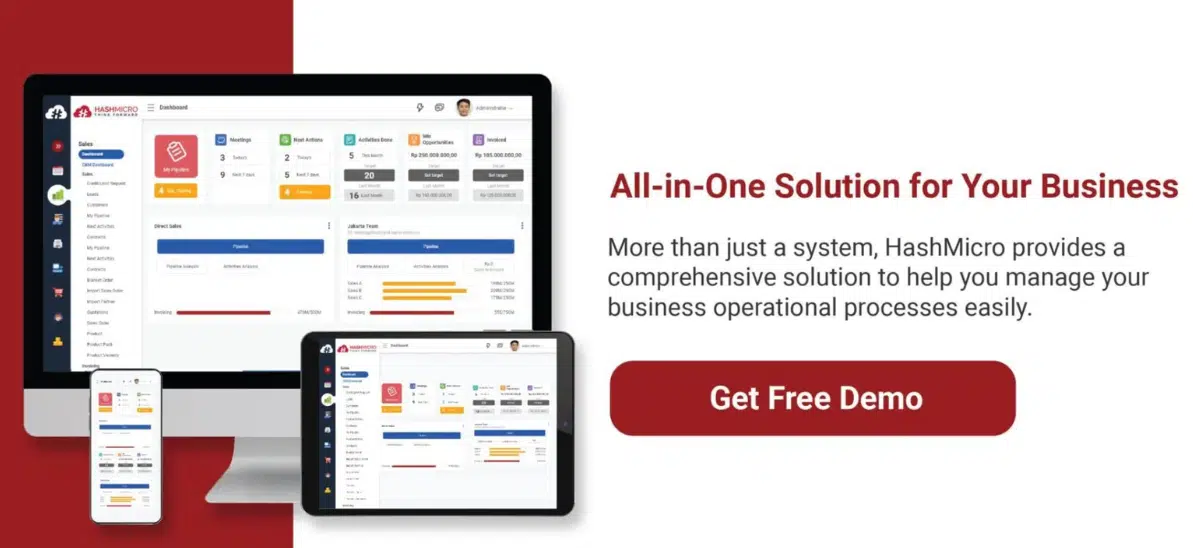Deferred revenue refers to payments received for goods or services that have not been delivered, thereby affecting financial reporting by creating a liability. Managing it ensures accurate revenue recognition and compliance with principles.
Accounting software offers automated solutions for managing deferred revenue. These tools simplify the recognition process, generate timely reports, and ensure compliance with GAAP or IFRS, thereby reducing the risk of errors and manual oversight.
Curious about what deferred revenue is and how it impacts your business? Keep reading to discover how deferred revenue management can boost efficiency and ensure more accurate financial reporting.
Table of Content:
Table of Content

Key Takeaways
|
What is Deferred Revenue?
Deferred revenue, or deferred income, means income received in advance for goods or services that have not yet been provided. It is considered a liability on the balance sheet, as the company owes the customer the delivery of a product or service in the future.
The key characteristic of deferred revenue is that it is initially recorded as a liability and only recognized as revenue when the company fulfills its obligations. It aligns with the revenue recognition principle in accounting, ensuring that income is recognized as it is earned.
Both deferred revenue and accrued revenue involve timing differences, but are opposites. Companies receive payment before service delivery in the case of deferred revenue, while they perform the service without receiving payment in the case of accrued revenue.
Both can impact the cost of revenue, as companies must carefully manage when payments are recognized and ensure that costs associated with delivering goods or services are accurately matched to the corresponding revenue.
Deferred Revenue vs Unearned Revenue
Companies use the terms deferred and unearned revenue interchangeably in accounting. They refer to money a company receives for goods or services that it has not yet provided, classifying it as a liability on the balance sheet until they deliver the goods or services or complete the performance.
Deferred revenue is typically the more formal or technical term used in accounting, whereas unearned revenue is more commonly used in non-technical contexts, particularly in industries such as education, subscription-based services, or insurance.
Although the terminology differs, both terms represent the same concept and help ensure that companies do not recognize income prematurely. Businesses recognize these funds as liabilities, showing that they owe the customer the delivery of a product or service in the future.
Why Deferred Revenue is Considered a Liability
Deferred revenue is a liability, representing a company’s obligation to provide future goods or services. When a company receives an advance payment, it has not yet earned the revenue and still owes the customer for fulfillment.
A company cannot recognize this payment as revenue until it has delivered goods or completed services.
Until the company delivers the goods or services, it keeps the payment as a liability on the balance sheet due to its future commitment to the customer and does not consider it earned income.
This treatment aligns with the revenue recognition principle, which requires companies to recognize revenue only when they earn it, not when they receive or record it. By recording deferred revenue as a liability, companies ensure compliance with standards and provide a more accurate financial representation.
How to Recognize and Report Deferred Revenue
Both GAAP and IFRS govern deferred income, emphasizing that companies must recognize revenue when they earn it, not when they receive it. It aligns income with the period during which the company meets its obligations, preventing premature revenue recognition.
Companies treat unearned revenue as a liability until they deliver the goods or services. They keep it on the balance sheet until they fulfill performance obligations, at which point they recognize it as revenue. The meaning of income statement summarizes a company’s revenues, expenses, and profits over a period.
Deferred revenue recognition relies on the terms of the contract. Subscription services recognize revenue during the subscription period, whereas other products typically recognize revenue upon fulfilling their obligations. It reflects the company’s earned income per the revenue recognition principle.
Examples of Deferred Income
Companies commonly practice deferred income, accounting for the advance payment as a liability until they deliver the goods or services. Below are examples of business or industries that uses deferred revenue.
- Subscription-based businesses
Subscription businesses, such as streaming services, utilize deferred revenue. Customers pay upfront for a monthly or annual subscription, and the company recognizes revenue for the corresponding subscription period, providing access to the content. - Prepayment models
Membership-based businesses, such as gyms or clubs, also often deal with deferred revenue. A customer pays for a year-long membership upfront, and the company recognizes the revenue monthly as it provides the services throughout the year. - Long-term contracts
Industries such as construction and consulting use unearned revenue for long-term contracts. When companies receive upfront payments for projects lasting months or years, they gradually recognize revenue as they achieve milestones.
Tips for Managing and Tracking Deferred Revenue
Effectively managing and tracking deferred revenue is crucial for maintaining financial accuracy and compliance. Below are the tips for managing and monitoring deferred income to streamline accounting processes and help avoid financial discrepancies.
- Set clear milestones
Clearly define the terms and milestones for recognizing deferred income based on the delivery of services or the fulfillment of products, as applicable. It helps ensure accurate tracking and timely recognition of revenue as you fulfill obligations. - Regular reconciliation
Frequently reconcile deferred income balances to ensure they match the actual performance obligations. It includes reviewing contract terms, payments received, and services delivered to identify and resolve discrepancies. - Automate recognition
Use software that automates the process of recognizing deferred revenue. Automation reduces the chances of human error and ensures consistency in tracking revenue across multiple contracts or subscription models. - Maintain documentation
Keep detailed records of all contracts, payment schedules, and delivery milestones. This documentation is crucial for accurate revenue recognition and serves as a valuable reference for audits or financial reviews. - Use accounting software
Use built-in tools for managing deferred revenue. These platforms automate revenue recognition, produce accurate financial reports, and ensure compliance with standards. Download our pricing scheme to see how it can enhance operations.
Risks Associated with Unearned Revenue
While unearned revenue provides businesses with upfront cash flow, it also presents several risks that require careful management. Here are the risks that unearned revenue presents.
- Revenue recognition risk
A major risk of deferred revenue is improper recognition. Failing to recognize earned revenue can inflate financial statements and misrepresent a company’s financial health, leading to compliance issues with standards such as GAAP or IFRS. - Cash flow mismanagement
Upfront payments boost short-term cash flow, but businesses must manage these funds well. Operational challenges or unfulfilled obligations can hinder refunding customers or meeting revenue criteria, resulting in financial strain. - Customer expectations
Deferred income can risk customer satisfaction. Delayed delivery of services or goods may lead to customer dissatisfaction, harming the business’s reputation and future sales. Managing delivery timing is crucial to mitigate this risk.
Streamline Deferred Revenue Management with HashMicro Accounting Software
Streamlining unearned revenue management is crucial for maintaining accurate financial records and ensuring compliance with relevant regulations. HashMicro Accounting Software automates deferred income recognition, minimizing manual errors and saving time.
Trusted by over 2000 clients, HashMicro enables efficient management of deferred revenue for accurate financial reporting and smooth operations, even in uncertain times. Here are the key features of HashMicro Accounting Software for managing deferred income.
- Complete financial statement: Provides a comprehensive set of financial statements, including the General Ledger (GL), Trial Balance (TB), Profit & Loss (P&L), and Balance Sheet (BS), enabling comparison of financial data across different periods.
- Direct and indirect cash flow reports: Offers both direct and indirect methods of cash flow reporting, helping businesses understand their liquidity position by tracking cash inflows and outflows from operations, investments, and financing activities.
- Multi-level analytical: Enables in-depth analysis of financial statements by comparing data across various levels, such as projects, branches, or departments, to gain insights into the economic performance of specific areas of the business.
- Comprehensive financial reporting: Delivers a wide range of financial reports, from profit margins to tax calculations, ensuring businesses have all the data needed for informed decision-making and regulatory compliance.
- Cash advance and realization management: It tracks and manages cash advances received or paid, ensuring accurate recognition of revenue and expenses once the company receives the services or products.
- Debt collection management: Assists in managing and tracking overdue receivables, providing tools to streamline the debt collection process and improve cash flow by reducing outstanding debts.
- In-depth accounting reports: Provides a wide array of detailed accounting reports, such as financial ratios, partner aging, and tax reports, to help businesses monitor their financial health, track accounts receivable collections, and maintain accurate financial records.
Conclusion
A business receives deferred revenue in advance for goods or services that it has not yet delivered. It records the payment as a liability until it provides the service or product.
HashMicro Accounting Software helps businesses automate the recognition of deferred revenue. It ensures accurate financial reporting and compliance with accounting standards, such as GAAP and IFRS.
Ready to see how it works for your business? Try our free demo today to experience the benefits of seamless deferred revenue management firsthand.

Frequently Asked Questions About Deferred Revenue
-
What is a journal entry for deferred revenue?
A journal entry for unearned revenue records income received in advance for goods or services that have not yet been provided. It occurs when a customer makes a prepayment, and the company has a future obligation to deliver the product or service.
-
Why is deferred income considered a liability?
Deferred revenue is a liability since it represents unearned income and an obligation to deliver a product or service. According to GAAP, you recognize the liability as earned revenue once you provide the product or service.
-
Is deferred revenue recorded as a debit or credit?
You record deferred income as a credit, representing an unrecognized liability. It appears on the balance sheet under either current liabilities (for sales within 12 months) or long-term liabilities, depending on the terms of the agreement.

























































